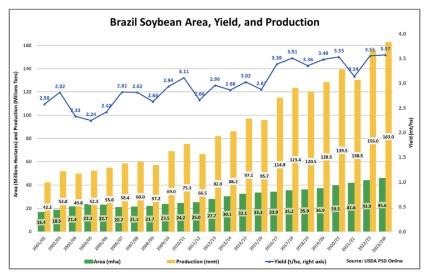By Garth Ruff

Can we capitalize on gained efficiency within the production system?
Over the winter meeting season, it’s been said many times that there are opportunities to be profitable given the current state of the beef industry. In the most simple of economic terms, Profit = Revenue – Input Costs. In order to increase profits we can do one of the following: 1) increase revenue, 2) reduce input costs, or 3) improve efficiency throughout the production cycle.
When every pound of calf produced has record (or near record) value, how do we capitalize on gained efficiency within the production system?
First off, we cannot manage what we do not measure, or record. Keeping up to date records, is critical to making management decisions. For the cow-calf producer, each cow ideally should have a performance record that tracks her performance throughout her lifetime. Record data points that have meaning to your operation, birth dates, birth weights, weaning weight, calving interval, etc. Having documented data for individual animals is common in dairy and swine, where a quick look at a female’s performance record allows for comparisons against contemporaries within the herd.
To improve efficiency at the farm level managers once those comparisons are made can then set culling thresholds for performance. Can you think of a reason to keep a cow that is repeatedly in the bottom 5% of the herd in pounds weaned?
I can’t either, but we must have records to identify those animals. Record keeping itself isn’t anything new, but how we record and utilize production data may be.
On the fed cattle side, we often keep production records on pens or groups of animals because they are fed as a group and often marketed as such. How could having induvial animal performance data aid in making feedlot management decisions? Or perhaps, how could individual animal performance in the feedlot impact genetics and mating decisions of the cow calf producer?
Recently, I have been part of ongoing discussions and have attended several lectures on Precision Livestock Farming or PLF. As a beef industry, we are generally lagging with regards to utilizing precision technology. For example, robotic milkers and automated sow feeders have been around for several years, generating useful data to make animal management decisions in their respective industries.
There are several reasons for this including herd size, multiple ownership transactions during the lifetime of a beef animal, and that we operate in a more extensive production system, particularly with cow-calf production. Rural internet and consistent, high quality GPS connectivity is a challenge for some technologies. Another limiting factor is the rate of adoption of electronic identification as many current PLF technologies use RFID to monitor animal performance.
I encourage producers who are interested, to consider how precision technology can be used to improve efficiency of their cattle operations. While we have had the ability to measure individual animal feed intake and performance in our research feedlot at OSU for some time, we now have a new mobile Super Smart Feeder that can be used to deliver up to four different diets at prescribed rate that will be used in beef heifer development research. This feeder provides an opportunity to manage individual animal nutrition within a larger herd setting.
Smart feeders and technologies such as virtual fencing are already in use and are just the tip of the PLF iceberg. There are sensors being developed for a variety of on farm applications. The use of models and artificial intelligence are rapidly increasing in agriculture.
In a recent discussion with an agricultural engineer the question was asked: What if PLF technology could be used to eliminate the subjectivity of selecting replacement heifers or evaluating which fed cattle to market? His question caught me a bit off guard as it is something I had never considered.
No longer, is precision agriculture limited to agronomic crop production. At Ohio State we are in the early stages of setting up our PLF research and Extension program. The first step is to figure out how to better use existing technology, but who knows what new ideas may become reality.
While I am not tech guru by any means, I am intrigued as to how we can use applicable technology to improve decision making and profitability via increased efficiency at the farm level in the beef industry.
Source : osu.edu